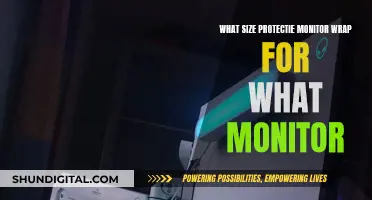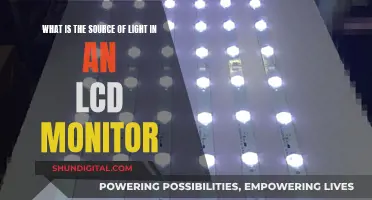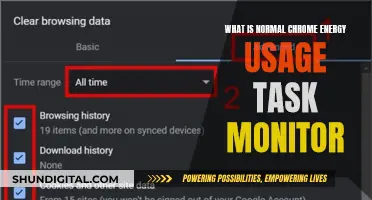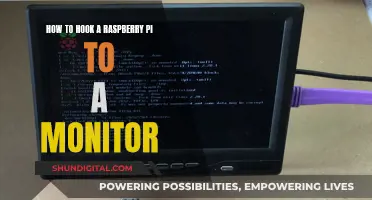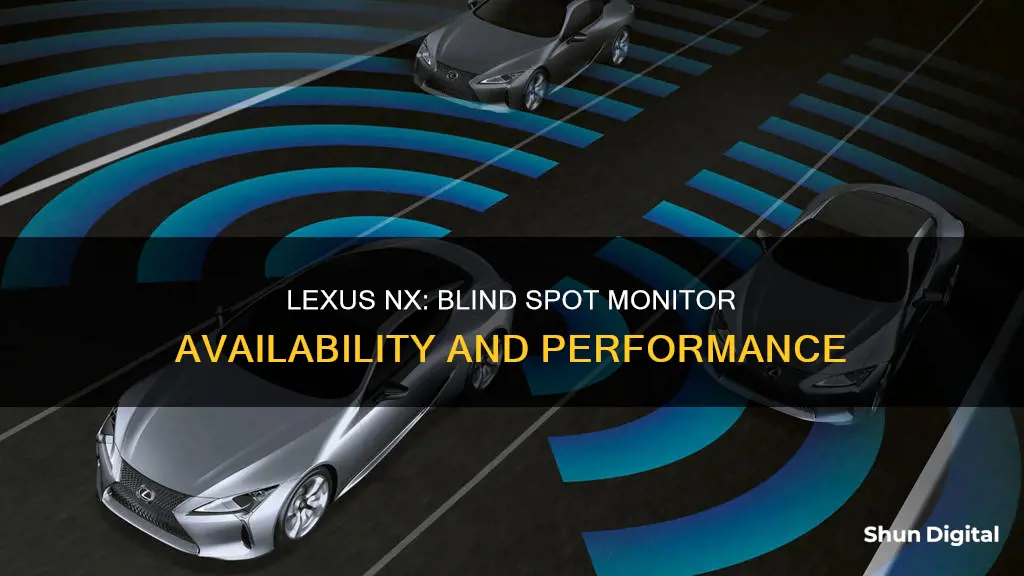
The Lexus NX is equipped with a Blind Spot Monitor (BSM) system, which uses sensors installed behind the rear bumper to detect vehicles, people, or objects in the driver's blind spots. This feature is designed to increase the driver's agility and improve their driving perception, making lane changes smoother and safer. The BSM system in the Lexus NX provides both visual and audible alerts to the driver, enhancing their awareness of the surrounding environment.
| Characteristics | Values |
|---|---|
| Blind Spot Monitor | Uses sensors installed behind the rear bumper to assist the driver in checking areas that are not easily visible |
| Rear Cross Traffic Alert | Assists the driver when backing up |
| Turning On/Off | Pressing the switch turns the system on or off |
| BSM Indicators | When a vehicle is detected in a blind spot, the outside rear-view mirror indicator on the detected side will illuminate |
| Rear Cross Traffic Alert Buzzer | When a vehicle is approaching from the right or left rear of the vehicle, a buzzer sounds from behind the right-hand rear seat |
| Rear Cross Traffic Alert Icon | When a vehicle is approaching from the right or left at the rear of the vehicle, the Rear Cross Traffic Alert icon for the detected side will be displayed on the navigation/multimedia system screen |
| Sensing Range | Extends up to 60 meters rearward in the adjacent lane |
| Alerts | Informs drivers with flashing warning lights on the exterior side-view mirror |
| Detection Areas | From the rear bumper: 9.8 feet; Forward of the rear bumper: 3.3 feet; From the vehicle side: 11.5 feet, after 1.6 feet non-detection area |
What You'll Learn

How to turn on the blind spot monitor in a Lexus NX
The Lexus NX is equipped with a Blind Spot Monitor (BSM) that uses sensors installed behind the rear bumper to detect vehicles in the driver's blind spots. This system is designed to assist the driver in checking areas that are not easily visible, especially when changing lanes or backing up.
- Locate the BSM button: The BSM button is conveniently placed inside the driver's door of the Lexus NX, typically to the left of the steering wheel.
- Press the BSM button: By pressing the BSM button, you can turn on the Blind Spot Monitor system.
- Confirm it's on: Look for the green BSM indicator light on the dashboard. If you see the green light, the Blind Spot Monitor is active and functioning.
It is important to note that the Blind Spot Monitor in the Lexus NX can be turned on or off with the push of the BSM button. Remember to always be aware of your surroundings and use the system as a supplementary aid to your own visual confirmation of safety.
Overclocking the ASUS ROG Monitor: Is It Worth It?
You may want to see also

The blind spot monitor's limitations
The Blind Spot Monitor (BSM) in the Lexus NX is a welcome safety feature that assists drivers in making decisions when changing lanes and alerts them when backing up. However, it is important to understand its limitations to ensure safe driving. Here are some limitations of the BSM in the Lexus NX:
- Specific Activation Speed: The BSM in the Lexus NX is designed to activate only when the vehicle's speed exceeds approximately 10 mph (16 km/h). Therefore, it may not provide assistance during slow-speed manoeuvres or when driving in parking lots.
- Limited Detection Area: The detection area of the BSM has specific ranges. It can detect vehicles approximately 11.5 ft (3.5 m) from the side and up to 9.8 ft (3 m) from the rear bumper. However, it may not detect vehicles within the first 1.6 ft (0.5 m) from the side and within 3.3 ft (1 m) forward of the rear bumper.
- Certain Types of Vehicles and Objects: The BSM is not designed to detect all types of vehicles and objects. It may not detect small motorcycles, bicycles, pedestrians, guardrails, walls, signs, parked vehicles, and similar stationary objects. Additionally, it may not detect vehicles travelling in the opposite direction or in lanes two lanes across.
- Specific Driving Conditions: The BSM may not function correctly in certain driving conditions. For example, it may not work properly when driving on roads with sharp bends, consecutive curves, or uneven surfaces. It may also be affected by standing water during heavy rain, snow, or fog, and when there is a significant difference in speed between your vehicle and others.
- Trailer Towing: The BSM may not function correctly when the Lexus NX is towing a trailer. This is an important consideration if you frequently tow trailers or caravans.
- Sensor Obstruction: The BSM relies on sensors installed behind the rear bumper. If these sensors are obstructed by water, snow, mud, or other debris, the system may malfunction and require a visit to the dealer for inspection.
- Sensor Misalignment: In the event of a strong impact to the sensor or its surrounding area, the sensor may become misaligned. This misalignment can lead to incorrect detections or a complete malfunction of the system.
- Aftermarket Modifications: Modifying the sensors or the surrounding area, such as by painting the rear bumper with a non-official Lexus colour or attaching accessories, is not recommended as it can affect the BSM's performance.
- Reliability: While BSM is a valuable safety feature, it is not foolproof. It is meant to supplement a driver's own visual confirmation and safe driving practices. Overreliance on the system could lead to accidents, and drivers should always remain vigilant and aware of their surroundings.
Buy Monitors: Cheap Price Tricks Revealed
You may want to see also

How the monitor increases agility on the road
The Lexus NX is equipped with a Blind Spot Monitor (BSM) system, which uses sensors installed behind the rear bumper to assist the driver in checking areas that are not easily visible. This advanced driving assistance system (ADAS) is designed to increase safety by alerting the driver to vehicles that may be in their blind spot when changing lanes.
The BSM system in the Lexus NX provides several benefits that increase agility on the road:
Increased Driving Awareness
The BSM system constantly monitors the blind spots on either side of the vehicle, providing the driver with additional coverage and increasing their awareness of potential hazards. This is especially useful when driving a larger vehicle, where visibility can be more limited.
Improved Decision-Making
By alerting the driver to vehicles in their blind spot, the BSM system assists in making lane changes safer and more efficient. The system provides valuable information that helps the driver make better decisions when manoeuvring between lanes, increasing their agility and confidence on the road.
Enhanced Response Time
The BSM system offers more accurate and timely information than relying solely on mirrors. By detecting vehicles in blind spots, the system allows the driver to recognise potential dangers faster and respond more quickly by braking or turning the steering wheel.
Collision Prevention
In addition to visual and audible alerts, more advanced BSM systems can provide autonomous steering or braking input to prevent collisions. This feature ensures that the driver can avoid potential accidents and maintain a smooth and agile driving experience.
Increased Manoeuvrability in Curving Roads
The radar sensors in the BSM system can alter their detection range based on signals from the steering angle sensor. This dynamic adjustment helps the system detect vehicles even when driving on curving roads, providing continuous assistance to the driver.
Asus Monitor Cleaning: A Step-by-Step Guide
You may want to see also

The blind spot monitor's detection range
The Lexus NX is equipped with a Blind Spot Monitor (BSM) system that uses sensors installed behind the rear bumper to detect vehicles in the driver's blind spots. The sensing range of the BSM extends up to approximately 11.5 ft (3.5 m) from the side of the vehicle, with the first 1.6 ft (0.5 m) from the side not included in the detection area. The system also has a rearward detection range of approximately 9.8 ft (3 m) from the rear bumper and 3.3 ft (1 m) forward of it.
The BSM function is designed to assist the driver in making decisions when changing lanes. When a vehicle is detected in the blind spot of the outside rearview mirrors, the BSM indicator on the corresponding side will illuminate. If the driver operates the turn signal lever towards the detected side, the indicator will flash as a warning. The BSM system can also detect vehicles approaching from the right or left at the rear of the vehicle, in which case both outside rearview mirror indicators will flash.
The detection range of the BSM system can be adjusted based on signals from the steering angle sensor, allowing it to adapt to curving roads and ensure accurate detection of vehicles even when the Lexus NX is not driving in a straight line. This dynamic adjustment of the detection range enhances the system's effectiveness in various driving scenarios.
It is important to note that the BSM function is supplementary, and drivers should not solely rely on it when changing lanes. The system cannot determine if it is completely safe to change lanes, so drivers must also use their own judgement and visually confirm the absence of vehicles in their blind spots to avoid potential accidents.
Hooking Your Predator Helios to a 144Hz Monitor
You may want to see also

How to activate the blind spot monitor on different Lexus models
Blind Spot Monitor (BSM) is a standard feature on most new Lexus models, including the Lexus GS, LX, RX, ES, GX, LS, NX, RC, and LC.
Lexus GS, LX, RX
To turn on BSM in the Lexus GS, LX, and RX, use your steering wheel controls to toggle over to the settings menu in your MID (which looks like a gear). Use the up and down arrows on your meter control switch to select "BSM". Each time the "." is selected on the meter control switch, BSM is either turned on or off. Make sure BSM is on by looking for the green BSM indicator light on the dashboard.
Lexus ES
Turning on BSM in the Lexus ES is much easier. All you have to do is push the BSM button, which is located under the outside mirror controls or to the left of your left knee when sitting inside the car.
Lexus GX 460
First, push the button on the GX steering wheel. Next, toggle up or down until you see BSM on the MID, then press "Enter".
Lexus IS
The Lexus IS also has a simple way to turn BSM on and off. Just push the BSM button, and when you see the green light, you'll know it's on.
Lexus LS
The Lexus LS has easy access to the BSM on and off button, which is located inside the driver's door to the left of the steering wheel. Press the button, and when you see the green light, you'll know it's on.
Lexus NX
You can turn BSM on and off in the Lexus NX by pressing the BSM button inside the driver's door. You'll know it's on when you see the green light.
Lexus RC
The Lexus RC's BSM can be turned on in the same way as the Lexus NX, IS, and ES. Just press the BSM button located inside the driver's door.
Lexus GX
There is a detailed how-to guide on turning on BSM in the Lexus GX in another post.
Cardiac Monitoring: Understanding Heart Health and Vital Signs
You may want to see also
Frequently asked questions
Yes, the Lexus NX has a blind spot monitor (BSM) feature.
The blind spot monitor uses sensors installed behind the rear bumper to detect vehicles, people, or objects in a driver's blind spots. When a vehicle is detected, a solid warning light flashes on the side-view mirror to increase the driver's awareness.
The process to activate the blind spot monitor depends on the model of your Lexus NX. Newer models have a BSM button, which you can press to turn on the feature. For older models without a button, you can press and hold the + and - buttons on the steering wheel for at least 2 seconds. A green light will indicate that the feature is turned on.
The blind spot monitor increases your agility on the road and gives you a more accurate impression of other vehicles' positioning. This enhances your driving perception and allows for smoother lane changes.
Yes, it's important to note that the blind spot monitor is a supplemental feature and should not replace the driver's own visual confirmation of safety. The system may not detect small vehicles like bikes or motorcycles, guardrails, walls, or vehicles two lanes across from your vehicle. Additionally, it may not function correctly in certain conditions, such as heavy rain, snow, or fog.



